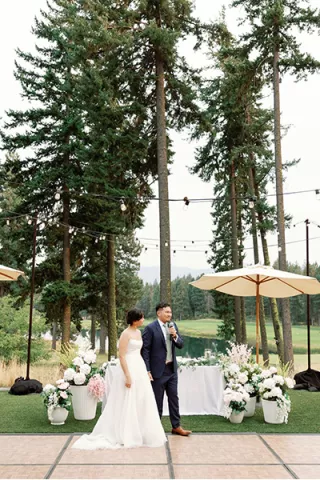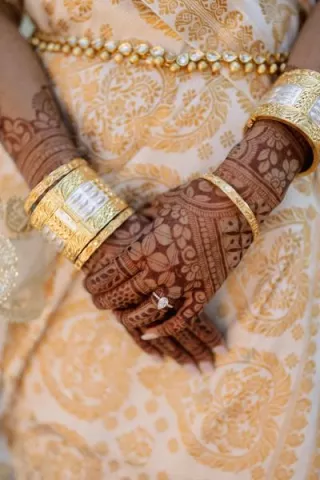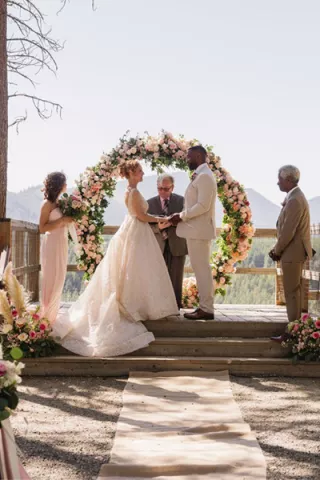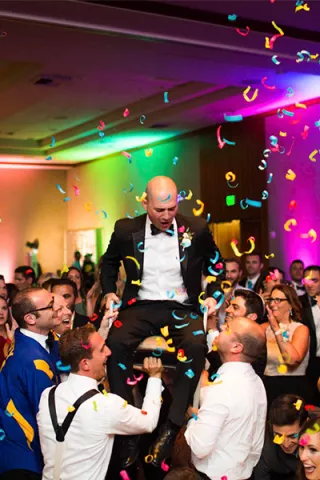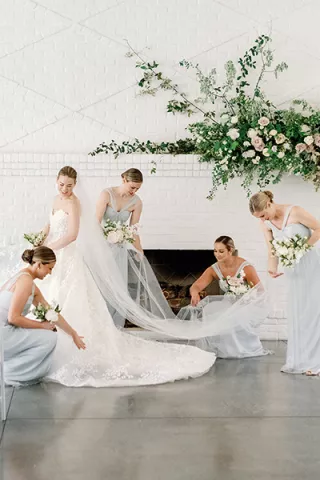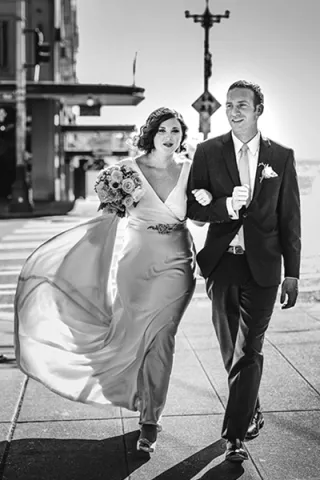One of the biggest challenges couples and their planners face on their wedding day is managing time. With so many moving parts - from getting ready in the morning to the grand send-off at the end of the night - there are countless opportunities for things to get off track. However, with proper planning, you can create a timeline that ensures a smooth flow, reduces stress, and allows you to savor every moment. Here are some of the most common timing mistakes couples make on their big day and how to avoid them.
1. Underestimating How Long Each Part of the Day Will Take
“One of the biggest wedding day blunders? Underestimating how much time everything actually takes! It’s easy to think you’ve got plenty of time, but those extra minutes getting ready or squeezing in just one more photo can throw off your entire day,” shares Howard Jensen from the Seattle Wedding Show. “The trick? Build in some buffer time—trust us, it’ll save you from unnecessary stress. Start by working backward from your ceremony time and give each part of your day a realistic time slot, plus some buffer time. And don’t forget to include a quiet moment just for you and your partner. Set aside a few minutes in the timeline to step away from the crowd, take it all in, and enjoy a private moment together before the festivities continue. Share this game plan with everyone involved, so there are no surprises. A little planning goes a long way in keeping things running like clockwork on your big day!"
Pro Tip: Work backward from your ceremony time and create a detailed schedule for each part of your day, incorporating extra minutes here and there. This way, you can handle any unexpected delays without the stress of feeling like you’re running behind.
2. Not Planning Sufficient Time for Guests to Transition from Cocktail Hour to Reception
When moving from cocktail hour to the reception, it’s common to underestimate the amount of time it takes for guests to get seated and settled. If you skip this, it can create confusion and delays in the flow of the evening. A buffer of at least 15 minutes is crucial when transitioning guests, especially if they need to move from one location to another within your venue.
Pro Tip: Plan a short transition period that allows guests to move comfortably and get to their seats on time without feeling rushed. Make an announcement 10 minutes before the reception begins to guide guests to the next location.
3. Skipping Early Communication with Vendors
A well-coordinated wedding day relies on the ability of all your vendors to work together seamlessly. Often, couples overlook the importance of sharing their timeline and updates with everyone involved. If one vendor is out of sync, it can cause a ripple effect of delays that impacts the entire day.
Pro Tip: Be sure to share your finalized timeline with every vendor, as well as any last-minute updates. Early communication ensures that everyone is on the same page, minimizing miscommunications and ensuring a cohesive experience.
4. Not Allocating Enough Time for Getting Ready
It's easy to underestimate how much time hair and makeup will take, especially if you have a large bridal party. Many couples mistakenly allocate too little time for this process, creating a ripple effect of delays that can impact the entire day’s schedule. Tetiana Savchenko from Tetiana Photography advises, “In my experience, the Getting Ready portion of the wedding day is when things often run late. A bride wants some make-up or hair adjustments, the dress has to be taped to fit properly, the bow ties are not pre-tied, there's construction on the way to the venue - any of those things can easily add 30-60 minutes to the schedule. I encourage all my couples to budget more time for the Getting Ready and Portraits than they think they would need. If everything goes smoothly, there's really no harm in having some downtime - you can take a little water break, refresh your make-up, hang out with your friends and family, or do more photos! But if something eats up more time than expected, having those built-in buffers is extremely valuable and alleviates so much stress on the wedding day!"
Pro Tip: Create a detailed schedule that breaks down the timing for each person's hair and makeup, allowing about 45-60 minutes per service. Don’t forget to include 15-30 minutes for your beauty team’s setup and prep. Staggering appointments will help everyone feel more relaxed and ready on time.
5. Not Building in Enough Buffer Time for Unanticipated Delays
One of the most crucial aspects of a well-executed wedding day is a flexible timeline that can accommodate unexpected changes. Ari Busch from Bridal Bliss Event Planning shares, “As planners, crafting the perfect wedding day timeline is one of our most crucial tasks to ensure a smooth event for our clients and fellow vendors. When we begin to near the final planning meeting, our number one question from clients tends to be, ‘How do we ensure we stay on time during the wedding day?’ Our top suggestion: build out your day with wiggle room for things to go longer than anticipated! As with all live events, it's inevitable that your schedule will shift at some point during the day. Whether it's hair and makeup running behind or guests taking extra time to take their seats at the reception, changes are bound to happen. By accounting for those extra areas of time in your schedule, the flow of your day will naturally allow your couple, vendors, and guests to not feel rushed, even if you start to sway from your original timeline.”
Pro Tip: Incorporate at least a 10-15 minute buffer between major events or transitions. This will not only keep your timeline intact but also alleviate any stress associated with unexpected delays.
6. Not Having Enough Alone Time for the Couple
After the whirlwind of your ceremony, it’s important to carve out a few quiet moments to soak in your first moments as newlyweds. Planning 10-20 minutes of alone time post-ceremony allows the couple to enjoy the excitement of just getting married before moving on to the next part of the day.
Pro Tip: Ask your catering team to leave a couple of glasses of champagne and hors d'oeuvres in the room where you’ll be spending this time, so you can grab a quick bite and toast to being newlyweds. These little touches will make this brief escape even more special and memorable.
7. Not Allocating Enough Time for Formal Photos
If you're not doing a First Look before the ceremony, you’ll need to build in extra time for photos between the ceremony and reception. This is especially true if you want more than a handful of formal group photos or multiple shots of you and your partner. Jenn Tai of Jenn Tai & Co advises, “If you're not doing a First Look or Reveal, you will either have to work in 1.5 hrs of cocktail hour (at least) or have very few formal group photos. We recommend fewer than 10 groupings of formal family or wedding party photos, and around 20 minutes of formal portraits of the couple. You can also squeeze a few more portraits at Golden Hour or Sunset. If you prefer more formal photo time, do a First Look. ”
Pro Tip: Plan your photo timeline carefully. If you're are skipping the First Look, allocate at least 1.5 hours for cocktail hour to work in group and couple portraits.
8. Not Leaving Enough Time for Toasts and Speeches
One of the most common mistakes couples make is not leaving enough time for toasts and speeches. Tristin Heiser of The Afterparty Band notes, “We will often see 15 minutes allocated in the timeline for 5 speeches. There's never ever EVER been a wedding where all 5 toasts take 3 minutes or less. Even if you tell your speakers to keep it brief, at best, you'll get 4-5 minute toasts. My advice is to either assume at least 5 minutes for each speech, OR to leave buffer times throughout your timeline for longer toasts or any other thing that will take longer than you think. It's well-known in the wedding industry that weddings get behind schedule, so a wise planner will plan for this to make sure you don't miss out on anything you really wanted to have happen that couldn't happen anymore because things got behind."
Pro Tip: Allocate at least 5 minutes for each speech and include some buffer time for transitions. Keep a few timeline elements flexible; if speeches run long, consider adjusting other activities that can be postponed or skipped entirely to reduce stress and stay on track.
9. Not Leaving Enough Time for Travel
Whether it’s shuttling guests between ceremony and reception locations or transporting your bridal party for off-site photos, travel time is often underestimated. Traffic, parking, and even gathering people to board transportation can take longer than expected.
Pro Tip: Add a buffer of 10-15 minutes each way for travel between venues and clearly communicate travel plans to everyone involved.
10. Failure to Share a Detailed Timeline With Vendors
A timeline that gives every detail of where the couple is and what they are doing is important. It allows the planner and other vendors adjust their service to best assist with the vision of the day. An example would be if the couple wants to have family photos at the ceremony space before the actual ceremony," notes Antonio Gomez from Hyatt Regency Lake Washington. “If outlined appropriately, it would tell all the vendors involved in the setup to have their work completed well in advance to allow for the photoshoot to stay on time.”
Pro Tip: Share a comprehensive timeline that covers every detail with your planner and vendors. This not only helps manage the day’s flow but also prevents misunderstandings and ensures a seamless experience.
11. Not Hiring a Professional Planner to Manage Your Timeline
The best way to ensure your day runs smoothly is to work with a professional wedding planner. Jenn Tai of Jenn Tai & Co notes, “Weddings are complex and what makes them complex is that weddings are highly emotional affairs. There's the couple and then there's their families and friends. A LOT of feelings are involved! As good as a planner or project manager as one thinks one is, it gets tricky when so much emotion is involved. So hire a planner would be the first mistake to avoid."
Pro Tip: A planner helps you build a realistic timeline, coordinates with vendors, and manages any unexpected changes. With a planner in charge, you can relax and savor every moment of your special day.
Photo by Vikki Chang Photo






